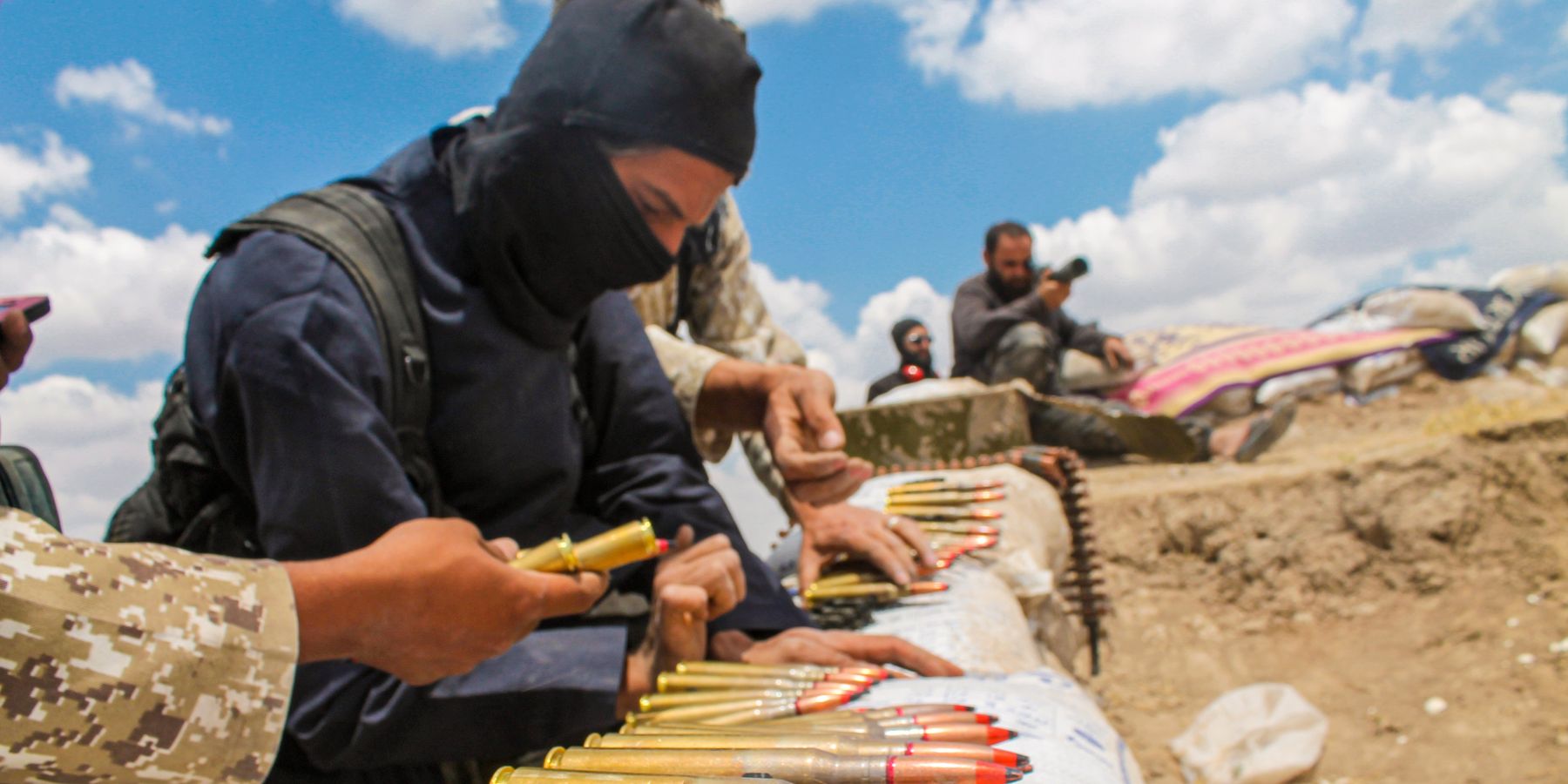ISIS attacks in Iraq and Syria remain at all-time lows despite fears that Middle East tensions related to the war in Gaza could lead to a resurgence of the group, according to a new report by independent U.S. government watchdogs.
In 2020, ISIS carried out as many as 200 attacks each month in Iraq and Syria. It now claims fewer than 40 monthly strikes. Despite calls by ISIS leaders to target Israeli and Western interests, the watchdogs report that the group now likely lacks the “intent and capability to direct attacks against the U.S. homeland.”
The report paints a dismal picture of the once-powerful militant group’s operations in Iraq and Syria, where it controlled huge swathes of territory in the mid-2010s. “ISIS’s capacity to conduct insurgent activities remained severely degraded in Iraq and Syria,” the watchdogs note, adding that the group now carries out fewer attacks near cities.
The group’s operations now appear more akin to a failing crime syndicate than a powerful terror group. Crackdowns on ISIS finances have left the organization unable to consistently pay its fighters, according to the report. Even ISIS leaders are paid only “sporadically” with funds drawn from buried caches of money hidden in locations across Iraq and Syria.
The inspectors general of the State Department, Defense Department, and USAID authored the report, which is part of a congressionally mandated series of updates on Operation Inherent Resolve, America’s campaign to defeat ISIS.
American cooperation with Syrian Kurdish forces has been largely uninterrupted, according to the report, while Iraq-based operations have been reduced due to the political and operational consequences related to U.S. support for Israel’s war in Gaza, according to the report.
Iran-aligned militias carried out at least 134 attacks on U.S. forces between the outset of the Gaza war in early October and December 2023, forcing U.S. troops in Iraq to divert “resources and attention” away from the counter-ISIS mission. U.S. military advisers “cancelled [sic] or delayed engagements with key Iraqi leaders pending a reassessment of security conditions,” the report notes.
On the political side, Iraqi Prime Minister Muhammad Shia al-Sudani has faced increasing pressure to negotiate an end to the U.S. troop presence in the country, and talks aimed at securing an American withdrawal began in late January.
The report provides useful data points amid debates over whether and how to withdraw U.S. troops from the region following the success of the anti-ISIS campaign.
Some analysts contend that a hasty withdrawal of U.S. troops from Syria could lead to a resurgence of the group. As Mona Yacoubian of the U.S. Institute of Peace recently told RS, it is not clear whether Kurdish forces in Syria could protect detention camps holding thousands of ISIS fighters in the country’s northeast. If the fighters escaped, they “could quickly pose a major threat to global interests,” Yacoubian argues.
Efforts to reform and repatriate fighters held at these camps have continued despite regional tensions, according to the report. Roughly 1,700 detainees returned home in the last three months of 2023, leaving the camps’ population at 47,000, a number that includes fighters and their families.
On the other side of the debate, experts see a continued U.S. presence in Syria as part of America’s “endless wars” in the Middle East and argue that America’s military deployments in the country help fuel ISIS recruitment efforts and expose U.S. troops to unnecessary dangers. The recent deaths of three U.S. soldiers based near the Jordanian-Syrian border highlights these concerns.
The politics surrounding a potential withdrawal will likely heat up over the next year. While a recent Senate bill calling for a U.S. withdrawal from Syria failed in a 13-84 vote, presumptive Republican presidential nominee Donald Trump has long expressed an interest in pulling U.S. troops out of the country.
Trump’s 2018 attempt to withdraw from Syria was foiled by his own appointees. But if the former president wins reelection in November, it’s hard to ignore the possibility that he could pull it off the second time around.
















